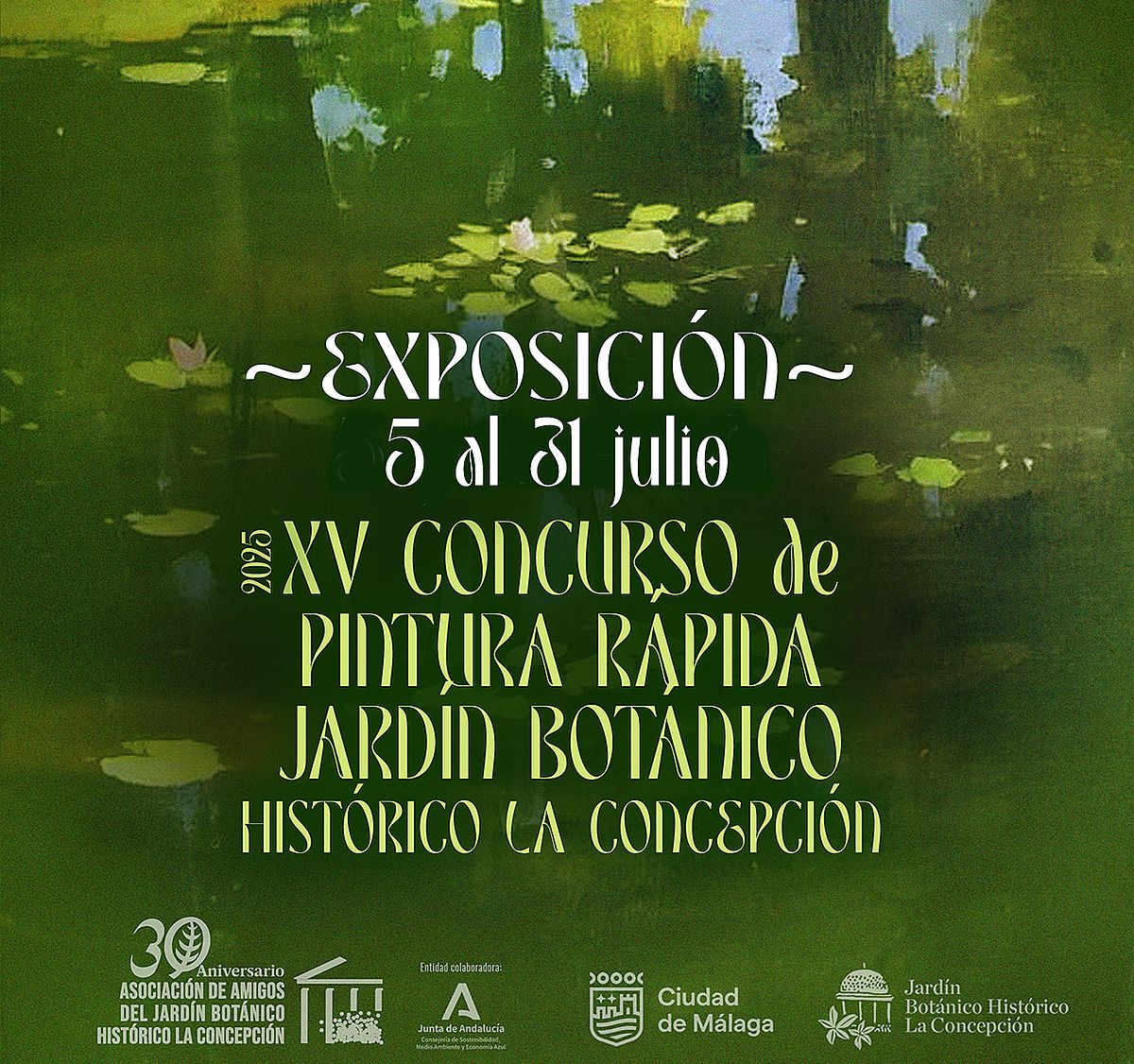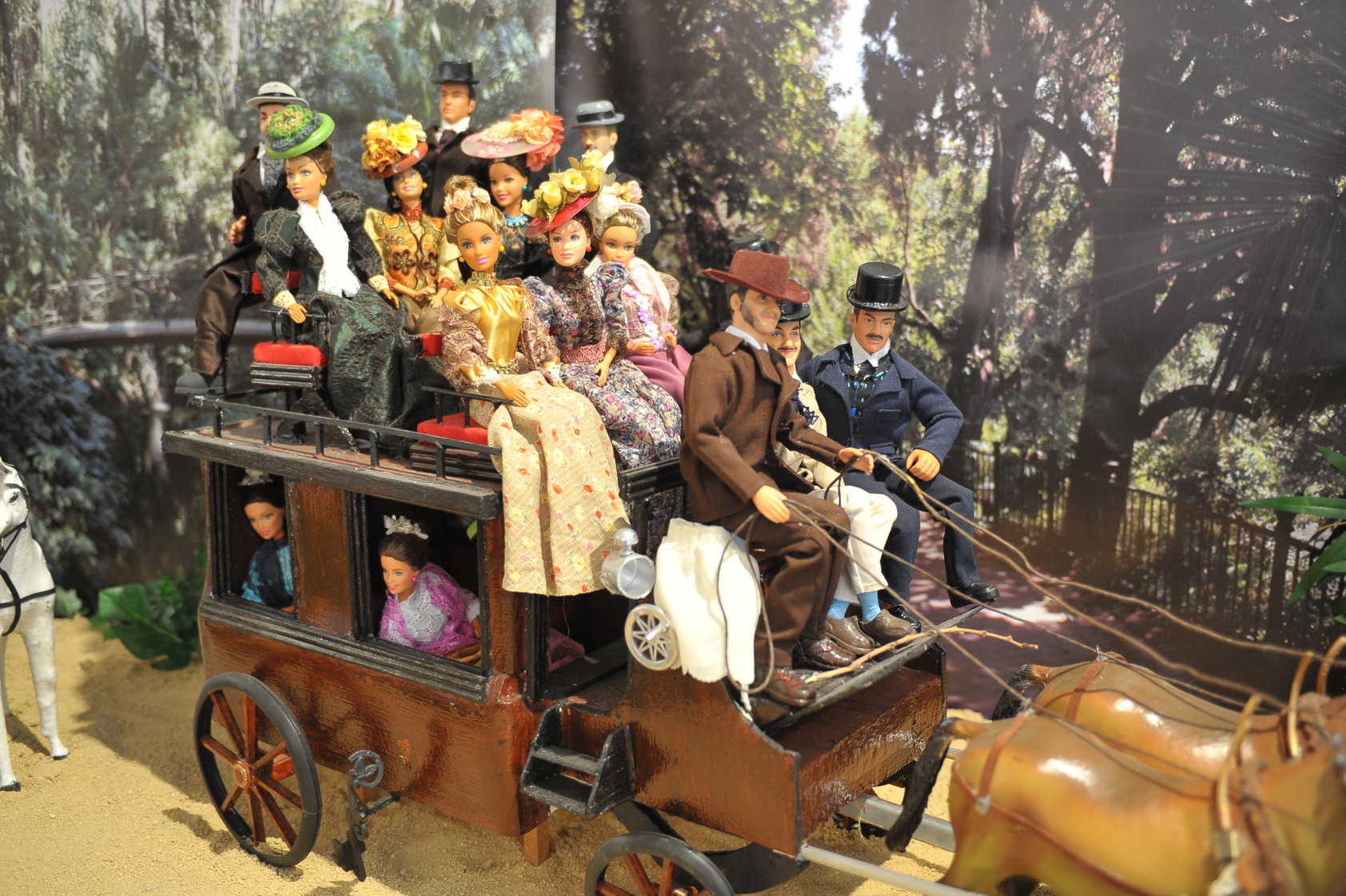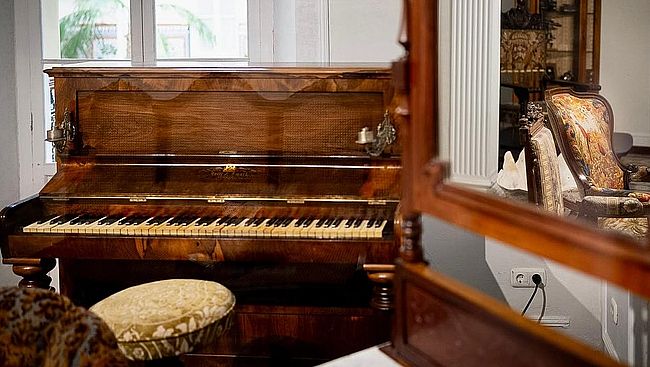Exhibitions
Temporary exhibitions are normally located at the ground floor of Casa del Administrador. Sometimes they move to the garden or the Casa Palacio.
La Concepcion houses a permanent exhibition at the Casita del Jardinero. Some scenes of the origin of the garden are told with Barbie dolls dioramas.
January: Siobhan Riordan. "Edén expresionista". Painting
February: Joaquín Cardalliaguet. "Amalia Heredia y el jardín". Mixta
March: Vicente Denis Corrales. "Los logros de Hércules. Los enemigos, las víctimas y los vencidos". Acílico
April: Jeaninne Cook. "De Mallorca a Málaga, Trazando la Naturaleza en Plata".
May:Alexander von Humboldt y los orígenes de la Ecología.
Jun: Catalina Coronado Guerrero. "Emboscados". Mixta; acrílico, acuarela.
July: Selection of participants in the painting. Asc. Friends.
August: Selection of participants in the painting and photography contest
September: Clotilde Lechuga. Jocelyn Marmottan
October: Ana Isabel Jimenez Gonzalez. "Pintura para exteriores".
November: Colectiva. Gabinete Hyde. "Jardín ocurrente".
December: Association of Friends
Painting exhibition. Selection of participants in the contest of the Asc. Friends.
From July 5th to 31st 2025
Between July 5 and 31, a selection of paintings of those who have participated in the contest organized annually by the Association of Friends, in collaboration with the Garden La Concepción, can be seen in the exhibition hall of the garden.
On June 1, the XV Outdoor Painting Contest was held at La Concepción, where we were able to enjoy almost 70 artists throughout the process of creating their works. The jury awarded the first prize to Juan Miguel Álvarez Páez. This exhibition gathers the works that have been selected for their quality or their ability to show the essence of the garden. The purpose of this exhibition is to spread the beauty of La Concepción, while supporting so many talented creators.
The history of La Concepción told by Barbie
The idea of using dolls to recreate the garden's history was conceived by the artist Alberto Martin, who has been putting together displays with Barbie dolls for many years. After studying a number of late 19th-century photographs, mostly from the Silvela Legacy, he created a series of almost identical scenes using not only the world-famous Barbie but also Ken, Madelman and other similar figures. Sponsored by the Malaga Foundation and the Friends of La Concepcion Association.
The aim of this exhibition is to portray both a key period in the history of La Concepcion and the Bourgeois lifestyle of the time in a way that will appeal to visitors of all ages. All of the materials used in the displays have been recycled: bottle tops, sink racks, clothes pegs, pencil sharpeners, pin cushions etc. Each figure is dressed in a different costume and hat made from dressmakers' cuttings; the hairstyles, fans and parasols sported by the women are all unique and were inspired by 19th-century clothing catalogues.
Furniture of the old library of the Stately Home
This exhibition displays period furniture in the room that housed the library of the Casa Palacio in the 19th century. The room can be accessed through a methacrylate tunnel to prevent deterioration of the furniture. This is intended to enhance the value of the elements of this space, which has allowed not only to improve its preservation, but also to generate greater artistic and cultural interest among visitors. Most of this furniture is part of the municipal heritage and dates from the second half of the nineteenth century and the first half of the twentieth century. Some of the most noteworthy are the office table of General Espartero, made of oak and of French origin, which served as Jorge Loring's own desk; as well as a mahogany chair that accompanies it. Another valuable element is an English Edward VI style mahogany corner cabinet with built-in bookshelves, display cabinet, table and sofa.



